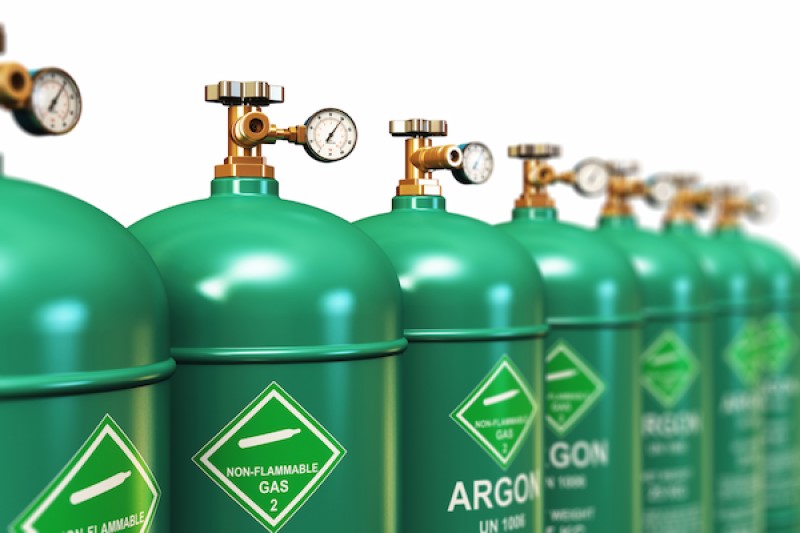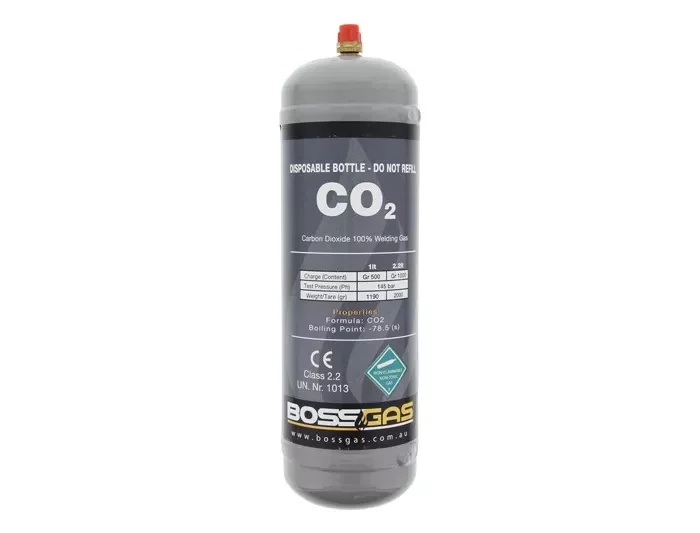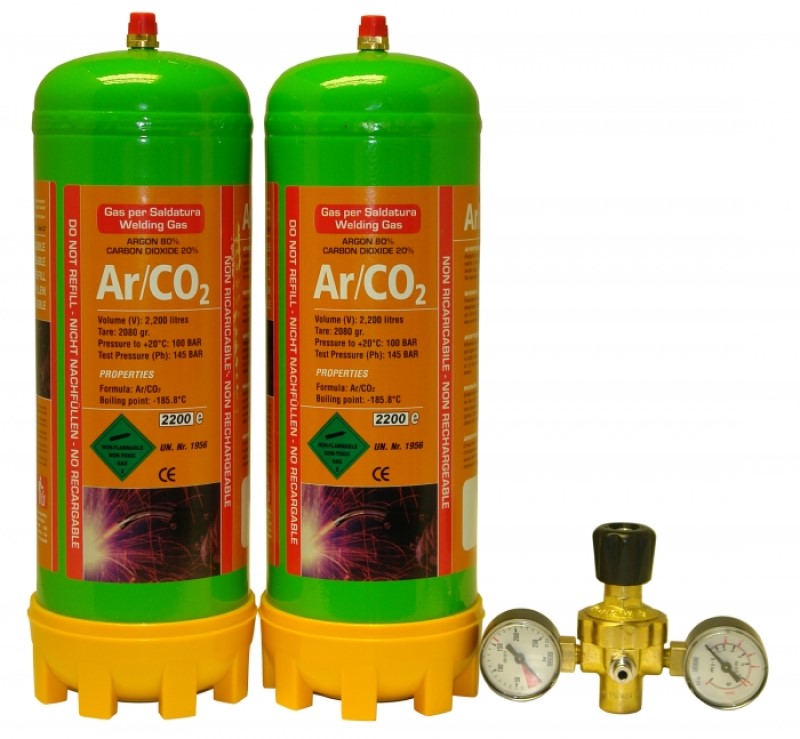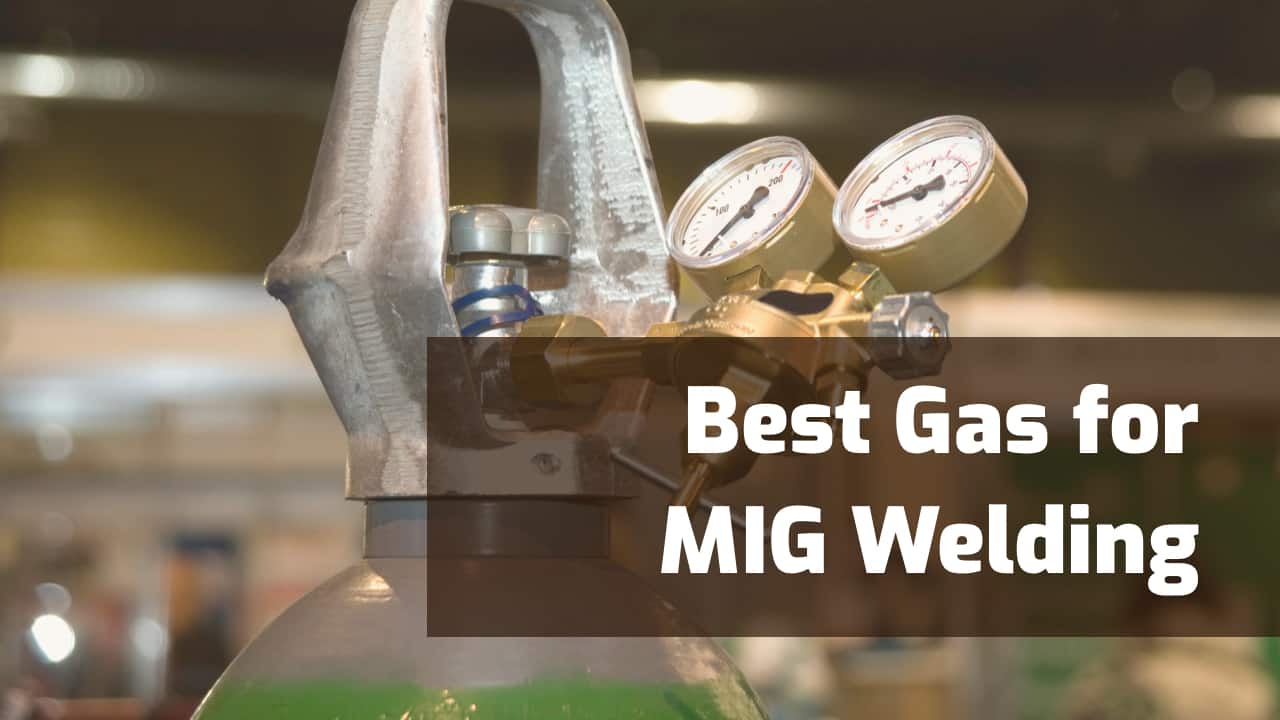When MIG welding, use gas to keep the outside air from coming into touch with the hot arc and the welding material. The shielding gas also contributes to the ease of arc ignition, arc stability, welding spatter control, and excellent detail and aesthetic weld quality. There are many different types of MIG welding machines available, and they are categorized according to the kinds of gases and gas mixes that are permitted for welding. What gas for MIG welding? The gases used in the MIG welder are listed below by WeldFAQ! Scroll down to follow!
What gas for MIG welding?
MIG (Metal Inert Gas) welding uses a shielding gas to protect the weld pool and electrode from atmospheric contamination. The most common gases used for MIG welding are argon and CO2.
1. Argon
Argon is a chemically inert, colorless, odorless, tasteless, non-toxic, and non-flammable gas that is often used for MIG welding. It is a highly effective shielding gas that helps to protect the weld pool and electrode from atmospheric contamination, which can cause porosity, cracking, and other defects in the weld. Argon is commonly used for welding aluminum and stainless steel, as it helps to produce a clean and stable arc, and provides a high level of penetration and bead appearance. Argon is also used in TIG welding and in some plasma cutting process.

2. CO2
CO2 (Carbon Dioxide) is a colorless, odorless and tasteless gas that is often used as a shielding gas in MIG welding. It is less expensive than argon, and is typically used for welding mild steel. CO2 is a reactive gas and it helps to create a hotter and more forceful arc that increases metal transfer, penetration and bead appearance.
CO2 also provides a good cleaning action, which helps to remove surface oxides and impurities from the metal, resulting in a higher quality weld. However, it is not suitable for welding aluminum and stainless steel, it may cause porosity and lack of fusion. CO2 is also used in some plasma cutting process.

3. Argon-CO2 mixture
An argon-CO2 mixture, also known as C25, is a blend of argon and CO2 that is often used as a shielding gas in MIG welding. The specific mix ratio can vary, but it is typically around 75% argon and 25% CO2. This mixture combines the benefits of both gases and offers a good balance of cost and performance. The argon provides a stable and clean arc, while the CO2 provides increased heat and metal transfer.
This mixture is ideal for welding a variety of metals, including steels, stainless steels, aluminum and other alloys, and it can provide a good penetration, bead appearance and cleaning action. C25 is also suitable for welding in different welding positions, including vertical-up and overhead, and it can improve the productivity of the welding process.

Instructions on how to install a pressure gauge on a safe gas tank
Installing a pressure gauge on a gas tank can help you monitor the pressure of the gas inside the tank and ensure that it is safe to use. Here are some general instructions on how to install a pressure gauge on a gas tank:
- Locate the valve on the gas tank where the pressure gauge will be installed. This valve is usually located at the top of the tank and may be labeled as a “pressure gauge” or “test” valve.
- Turn off the gas supply to the tank and ensure that the tank is at a safe pressure level before installing the gauge.
- Remove the protective cap from the valve, exposing the threads.
- Screw the pressure gauge onto the valve, making sure that it is securely tightened.
- Open the gas supply to the tank and check the pressure gauge to ensure that it is working properly.
- Make sure that the gauge is calibrated correctly, if the gauge have the adjustment knob, turn it to adjust the pointer to the 0 position.
It’s important to follow the manufacturer’s instructions for your specific pressure gauge and gas tank. Some gauges may have additional steps or require special tools for installation. Additionally, you should have a professional to check the installation and the safety of the equipment.
Frequently asked questions (Weld FAQ)
What is the best gas for MIG welding?
The best gas for MIG welding depends on the type of metal being welded and the desired outcome of the weld.
For welding aluminum and stainless steel, argon is considered the best gas. It creates a clean and stable arc, provides a high level of penetration and bead appearance, and is chemically inert, which helps to prevent porosity and other defects in the weld.
For welding mild steel, CO2 is commonly used, it is less expensive than argon and it helps to create a hotter and more forceful arc, which increases metal transfer, penetration, and bead appearance. It also provides a good cleaning action, which helps to remove surface oxides and impurities from the metal, resulting in a higher quality weld.
For welding steels, stainless steels, aluminum and other alloys, a mixture of argon and CO2, known as C25 (75% argon and 25% CO2) can be used. This mixture combines the benefits of both gases and offers a good balance of cost and performance. It provides a stable and clean arc, while the CO2 provides increased heat and metal transfer. This mixture is ideal for welding in different welding positions, including vertical-up and overhead, and it can improve the productivity of the welding process.
Why use gas in MIG welding?
Gas is used in MIG welding to protect the weld pool and electrode from atmospheric contamination. The shielding gas is directed through the gun and around the wire electrode and weld pool. This creates a protective barrier that prevents oxygen, nitrogen, and other atmospheric gases from reacting with the hot weld pool and causing porosity, cracking, and other defects in the weld.
The most common gases used for MIG welding are argon and CO2, which offer different benefits depending on the type of metal being welded.
Wrapping Up
So, what gas for MIG welding? Argon is a pure gas that is often used for welding aluminum and stainless steel, while CO2 is a cheaper gas that is typically used for welding mild steel. A mixture of the two gases, called argon-CO2, is also used for MIG welding and can be adjusted to suit the specific application. In summary, the most common gases used for MIG welding are argon, CO2, and argon-CO2 mixture.

